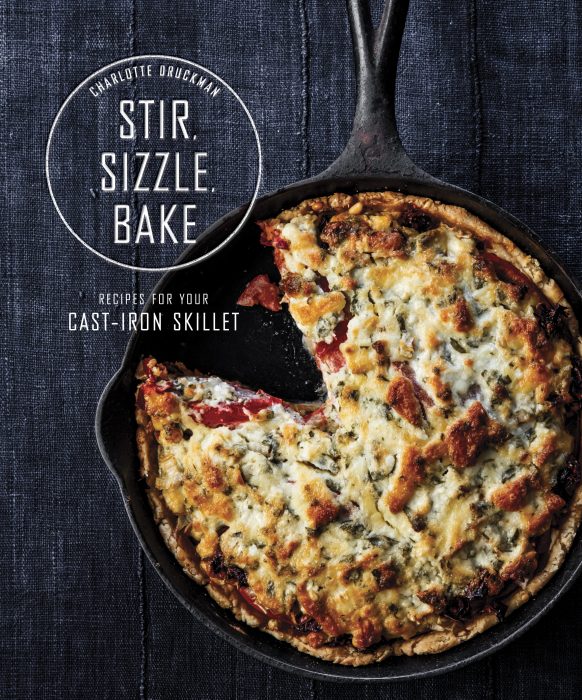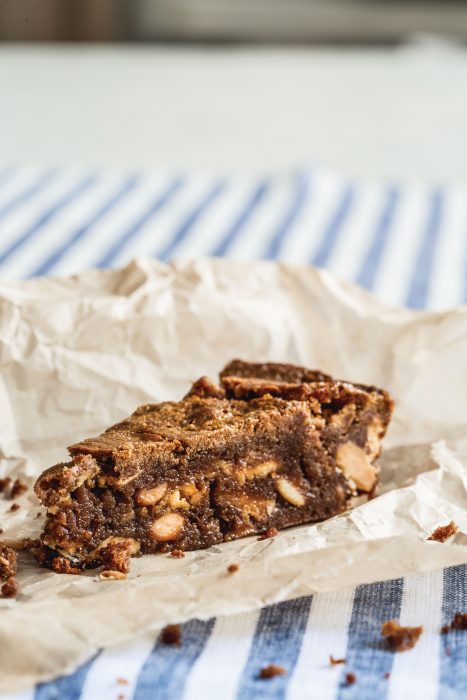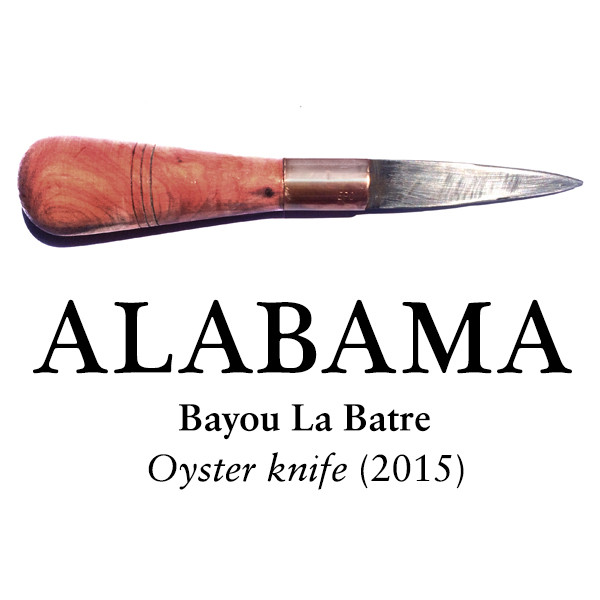
Photographs by Aubrie Pick; courtesy of Clarkson Potter
As kitchen-related objects that signal an entreé into adulthood go, the iconic cookbook (think Joy of Cooking or Mastering the Art of French Cooking) looms large. It’s been the gift of a million moms to their just-graduated/ just-moved/ just-married offspring; a gift that says you are a grownup who will now do grownup things like follow recipes. But, for me, my kitchen milestone was the gift (from my mom, naturally) of my first cast iron skillet. Procured, like so much else in my life, from the home section of a Massachusetts Marshall’s, it shared little in common with the wimpy pots and pans that preceded it; this—this!—was a revelation. It’s a sentiment echoed by Charlotte Druckman in her new book Stir Sizzle Bake (Clarkson Potter) which focuses myopically on recipes designed for your cast-iron skillet (each one was tested on a Lodge 10 1/4-inch version). Druckman aims to demonstrate the countless possibilities that lie in that one pan and the book offers a vast swath from lazy cheese arepas to migas with sweet potato rusks, double chocolate scones to an apple quince pie. A singular sensation indeed. FV

Photographs by Aubrie Pick; courtesy of Clarkson Potter
HALVA FUDGE BARS
Makes 16 bars
I originally called these blondies. They have the necessary brown sugar and butter associated with cocoa-free brownies. But they’re not blonde, they’re maroon, thanks to an Ethiopian staple, teff flour, and, indirectly, the Middle Eastern sesame confection, halva. Blondies are frequently dry. It becomes egregious when, to that dryness, you bring an even drier accoutrement like halva. I added a dark burgundy-colored date syrup to create an extra moist batter. By pulling out the pan while the center is still gooey and barely set and the top is crisp, you achieve the baking equivalent of searing a piece of steak on cast iron: a solid crust with a “rare” inside. Like the meat, the dough won’t stop cooking once it’s out of the oven. The results are so moist, “blondie” isn’t a good enough label. My halva miracle is more like fudge, and so I changed its name appropriately.
1 cup (2 sticks) plus 1 teaspoon butter
2 large eggs
1¼ teaspoons salt
1 cup packed dark brown sugar
2⁄3 cup date syrup
1½ teaspoons vanilla extract
2 cups teff flour
1 cup fried marcona almonds
1 cup packed halva
1 Preheat the oven to 350°F with a 10-inch cast-iron skillet placed on a rack in the lower third of the oven. In a small saucepan, melt 1 cup of the butter and set it aside.
2 In the bowl of a stand mixer fitted with the whisk (or in a large bowl using a whisk), beat the eggs until they’re frothy. Add the salt, brown sugar, date syrup, and vanilla and whisk until combined. Whisk in the melted butter. Using a spatula, fold in the teff flour until just combined. Fold in the almonds.
3 Remove the hot skillet from the oven and place the remaining 1 teaspoon butter in it. As it melts, brush the butter over the bottom and sides of the pan to coat. Pour half the batter into the pan. Scatter the halva over the surface of the poured batter, crumbling it with your fingers as you go. Pour the remaining batter over the halva, using a rubber spatula to smooth over the top.
4 Bake for 40 minutes, until the edges are darkening and beginning to crack and the middle is just set. You want the center to be barely cooked through, almost like warm cookie dough. Let it cool in the skillet for an hour. Then, using the Upside-Down Plate Trick (see page 56), flip it so it’s right-side up. Cut it into 16 small wedges and serve.
Warning: opendir(/nas/content/live/gatherjournal/wp-includes/images/media): failed to open dir: No such file or directory in /nas/content/live/gatherjournal/wp-includes/post.php on line 7113
Notice: Undefined variable: icon in /nas/content/live/gatherjournal/wp-includes/post.php on line 7183
Advertisement

